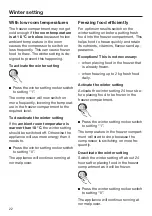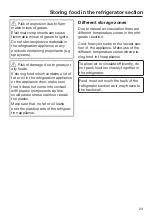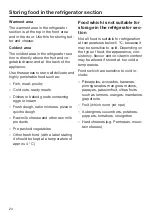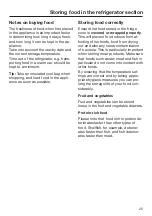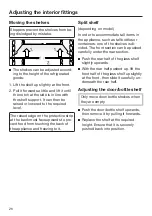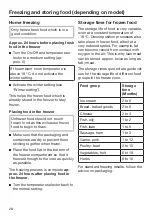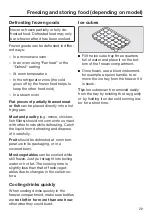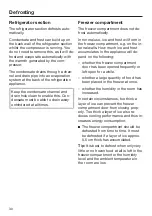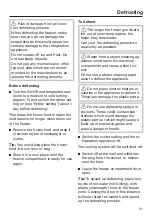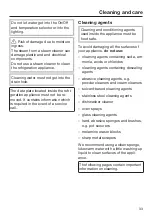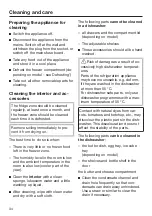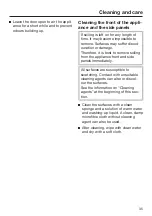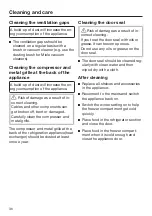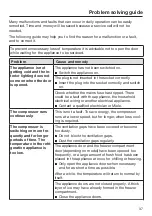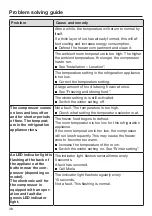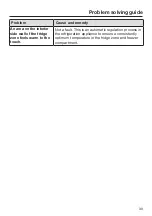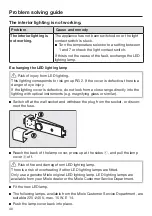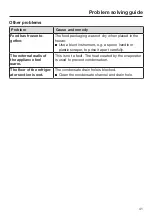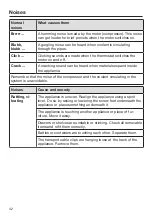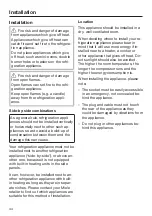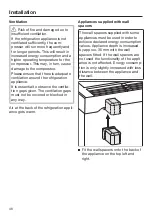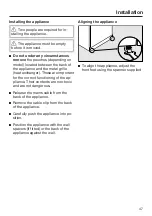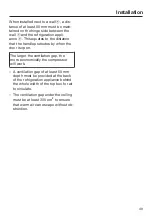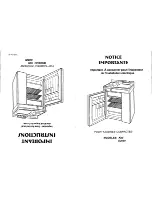
Cleaning and care
34
Preparing the appliance for
cleaning
Switch the appliance off.
Disconnect the appliance from the
mains. Switch off at the wall and
withdraw the plug from the socket, or
switch off the mains fuse board.
Take any food out of the appliance
and store it in a cool place.
Defrost the freezer compartment (de-
pending on model - see Defrosting")
Take out all other removable parts for
cleaning.
Cleaning the interior and ac-
cessories
The fridge zone should be cleaned
regularly, at least once a month, and
the freezer zone should be cleaned
each time it is defrosted.
Remove soiling immediately to pre-
vent it from drying on.
The best time to do so is when:
– There is very little or no frozen food
left in the freezer zone.
– The humidity level in the room is low
and the ambient temperature in the
room is also low (cooler part of the
year).
Clean the
interior
with a clean
sponge, lukewarm water and a little
washing-up liquid.
After cleaning, wipe with clean water
and dry with a soft cloth.
The following parts
cannot be cleaned
in a dishwasher
:
– all drawers and the compartment lid
(depending on model)
– The adjustable shelves
These accessories should all be hand
washed.
Risk of damage as a result of ex-
cessively high dishwasher temperat-
ures.
Parts of the refrigeration appliance
may become unusable, e.g. deform,
if they are washed in the dishwasher
at more than 55 °C.
For dishwasher-safe parts, only use
dishwasher programmes with a max-
imum temperature of 55 °C.
Contact with natural dyes from car-
rots, tomatoes and ketchup, etc., may
discolour the plastic parts in the dish-
washer. This discolouration does not
affect the stability of the parts.
The following parts
can be cleaned in
the dishwasher
:
– the butter dish, egg tray, ice cube
tray
(depending on model)
– the shelves and bottle shelf in the
door
the butter and cheese compartment
Clean the condensate channel and
drain hole frequently so that con-
densate can drain away unhindered.
Use a straw or similar to clear the
drain if necessary.



